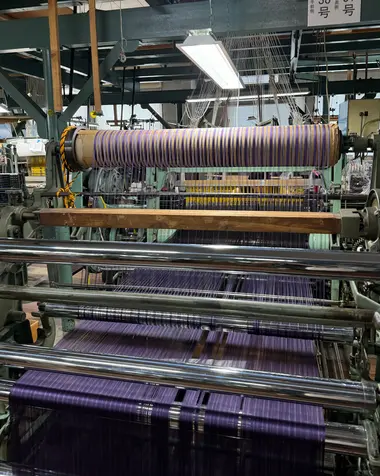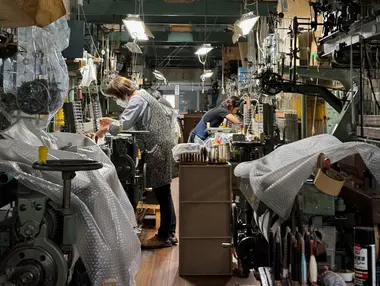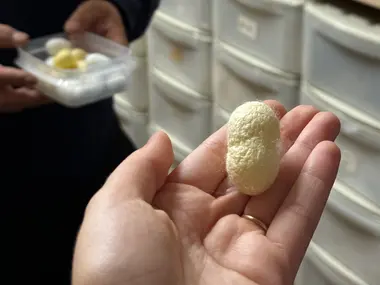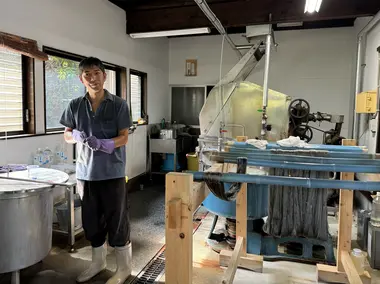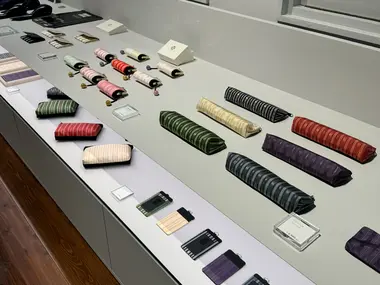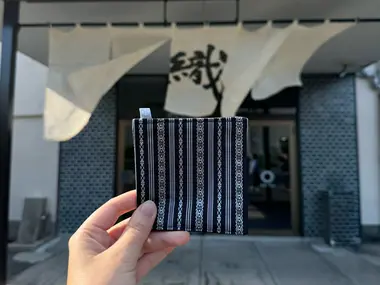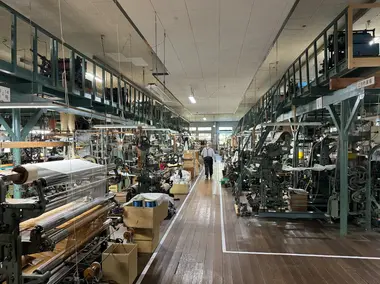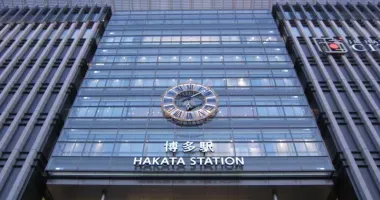Hakata-Ori textiles: a wearable piece of tradition and history
- Published on : 30/10/2024
- by : Joshua
- Youtube
Hakata-Ori weaving was developed hundreds of years ago and, thus, has become an iconic presence within traditional Japanese aesthetics. Take a look at the history of this famous textile and how it carries on into the modern day!
Very few cultural artifacts are as emblematic of a culture as garments and textiles. The culmination of climate, available resources, aesthetic identity, and lifestyle all contribute to the textiles and fabrics produced in a given region, and through the attire of a given people, the story of their roots is on full display.
The traditional textile of “Hakata-Ori” is no different and originates in Fukuoka Prefecture, right at the precipice of Kyushu Island. Hakata-Ori is a textile many are most-likely familiar with, even if they don’t know it. There is little doubt that in many depictions of people wearing traditional Japanese clothing have that there is some instance of Hakata-Ori present, likely in the form of the thick and sturdy “obi” belt that the subject is wearing.
A definitively Japanese motif
Hakata-Ori has been woven in Fukuoka for nearly 800 years, and through those centuries, its presence has become a staple of Japanese culture. During the Kamakura Period, a merchant named Mitsuda Yazaemon traveled with the venerable Buddhist monk Shoichi Kokushi to China. Their return home would result in the genesis of some of Japan’s most recgonized dishes and crafts, such as manju, udon noodles, gold leaf crafts, signature ceramics, and, of course, the weaving of Hakata-Ori. At the time the craft was in its early stages, but over the years the tried-and-true production process would develop into a distinct art all its own.

Obi belts made out of silk Hakata-Ori fabric
@Japan Experience
A sturdy weft and weave
The construction of this textile is largely characterized by a four-step-process:
- The design is mocked up on paper, portraying the pattern and coloration.
- The fabric yarns, mosty silk for the most traditional and high-end of Hakata-Ori, are dyed by a designated craftsman.
- The initial warp yarns are prepared and inserted into the loom.
- Finally, the weave yarns are prepared and then woven with the designated pattern in mind.
While this is the general process for creating Hakata-Ori, there is, of course, more nuance in the process that provides the fabric with its distinct, heavy and ribbed texture. When tied up, it is difficult to come undone naturally, making it great for use in traditional Japanese-style knotted garments and belts. At its most traditional and authentic, Hakata-Ori is woven on a traditional Jacquard-style loom.
There are two primary variations of Hakata-Ori: Kenjo-Gara and Mon-Ori. Kenjo-gara is the design most associated with Hakata-Ori, largely consisting of stripes going across the long piece of fabric and an interlacing diamond design going parallel. Mon-ori refers to Hakata-Ori that incorporate different colors.
Nishimura Hakata-Ori: A long-standing heritage
The art of Hakata-Ori is a long standing one, so naturally, the manufacturers who create the textiles into the modern day have histories that reach far back as well. Nishimura Hakata-Ori is one of these heritage producers, with the workshop originally being founded in 1587.
Located in Chikushino, it is the oldest textile company in the region. Nishimura takes much pride in this, dedicating themselves to traditional techniques well into the modern age.
Nishimura allows for visitors to take a look at the process of making their renowned Hakata-Ori firsthand. The machines used for manufacture are out in the open and can be observed together with the yarns and dyes. A room dedicated to the traditional Hakata-Ori loom is also available for viewing. Also on site are the silkworm cocoons used for sourcing the raw silk used for the products. There are also a number of goods for sale at Nishimura. While their claim-to-fame are their obi belts for traditional Japanese clothing, small goods such as bags and coasters are also available.
In recent years, Nishimura has gone on to develop fabrics for interior design, with some of their offerings on display at the elegant Fukuoka Ritz-Carlton; a testament to their pedigree and craftsmanship.
More information about Nishimura and their Hakata-Ori products can be found on their official website here. To book this activity, you can do so here.
Address, timetable & access
More details and reservation for visiting Nishimura workshop:
Address
7-chōme-1 Murasaki
Chikushino-shi, Fukuoka-ken
818-0061
Japan
Timetable
10:00-17:00 - Closed SundaysWebsite
https://enjoykyushu.com/detail/bokun/930239/

